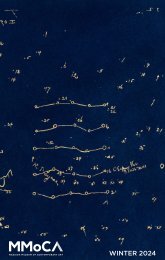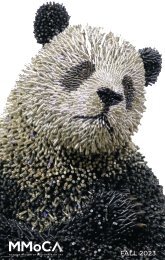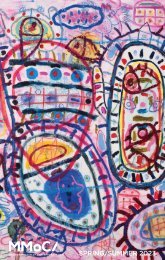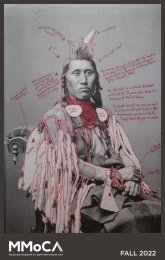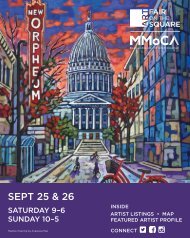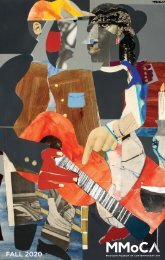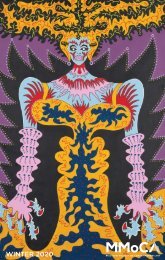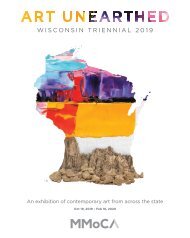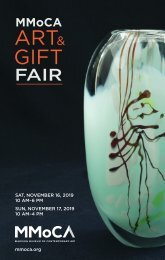Sebura&Gartelmann: Bonded exhibition catalog
Exhibition essay, images, and an interview with the artists. This catalog accompanies the exhibition in the Imprint Gallery.
Exhibition essay, images, and an interview with the artists. This catalog accompanies the exhibition in the Imprint Gallery.
Create successful ePaper yourself
Turn your PDF publications into a flip-book with our unique Google optimized e-Paper software.
Q. When my peers did the studio<br />
visit, they noticed that there was<br />
very little fear of failure and you<br />
embrace that as part of the creative<br />
process. Do you think that is due to<br />
the collaborative nature of what you<br />
do?<br />
JS: I think it’s definitely a part of it. I<br />
think there’s two different types of<br />
failure in our work. One half of a<br />
failure is like fully designed into the<br />
work, that things are designed to<br />
collapse, to fail, to break, to end in<br />
pain in some way, or at least calamity<br />
I should say, maybe not pain, but<br />
calamity. And then the other part of<br />
failure is the really real failure, like,<br />
“Oh, I just can’t figure this out” failure,<br />
“this thing isn’t going to work” failure.<br />
And I think that that is also the trust<br />
that that’s going to be fine. It’s<br />
definitely a part of our collaborative<br />
practice, even if something does fail,<br />
there’s always a nugget of that that’s<br />
really important, that’s a learning<br />
experience, right? And I think that<br />
that’s the idea of creative problem<br />
solving. It’s designed into the process,<br />
that through failure, we’re constantly<br />
trying to find the thing that might<br />
work and might be built upon.<br />
Because things fail, but not through<br />
design. It’s like, “Oh, this sucks this<br />
isn’t a good work of art. This is a<br />
piece of shit,” right? But then there’s a<br />
moment, “Oh wait, there’s this nugget,”<br />
or maybe even in five years from now,<br />
that nugget will pop up. “Remember<br />
that thing we tried but didn’t come<br />
together? Here’s this component that<br />
we didn’t see then. But let’s build on<br />
that right now.” I think that’s the only<br />
way we know how to go through the<br />
world is to keep working through<br />
that. And I think that also has a big<br />
part to do with skateboarding too,<br />
oddly enough. Every public planner<br />
and architect that designs something<br />
that doesn’t do the thing. But for us,<br />
it’s always something that we can<br />
build on, right? That we can find a<br />
solution to the thing that we need<br />
through skateboarding, right? It’s like,<br />
we can use this, what was designed as<br />
a perfect bench, is actually a perfect<br />
ledge to grind down or something like<br />
that, right? So I think that’s kind of<br />
ingrained in us in a lot of ways too.<br />
AG: You know, in a lot of ways, our<br />
practice is iterative, it’s not one thing<br />
feeds into the next. So, for things to<br />
not work is actually more important<br />
than to have things that do work,<br />
because then we understand what<br />
36





